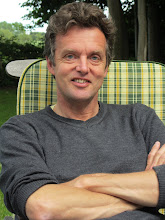HOLSTENSHUUS
Our 60km cycle ride this morning took us past Holstenshuus, a lovely stately home in the hills of southern Fünen.
The name ("Holstein's house") is a reminder of the influence of north Germany on Denmark in former times. In contrast to other mediæval monarchies such as France and England, the Danish monarchy remained elective rather than hereditary, with kings being acclaimed in the four parts of the realm; Jutland, Fünen and the Isles, Zealand, and Skåne (now southern Sweden). In return for their acclamation, the barons naturally extracted concessions, which kept the monarchy weak. Things reached a low point during the reign of Christoffer II (king from 1320-6 and again from 1329-32). His accession charter promised to drastically reduce taxation, which inevitably suited the nobility, but equally inevitably impoverished the Crown. The finances got so bad that by the end of his reign, the country was effectively mortgaged to the powerful Counts of Holstein. Their grip was so strong that Denmark had to manage without a king from 1332 to 1340.
Holstenshuus reflects these events. First mentioned in the sources in 1314, it was at that time called Finstrupgård ("Finstrup farm") after the neighbouring village. Then the Holsteiners moved in.
Although the Danes subsequently managed to get back control of their own country, German influence remained widespread. The Hanseatic League, controlled by Lübeck, was the most important economic player in Scandinavia during the Middle Ages, and Low German was the lingua franca of the whole Baltic Region. German was also the language of the Danish (and Swedish) courts, many of the Danish king's ministers were of German origin, and German princesses provided a string of suitable royal brides. It was not really until the 19th century that Denmark was run by Danish-speaking Danes.
Walter Blotscher
Sunday, 26 June 2011
Subscribe to:
Post Comments (Atom)

No comments:
Post a Comment